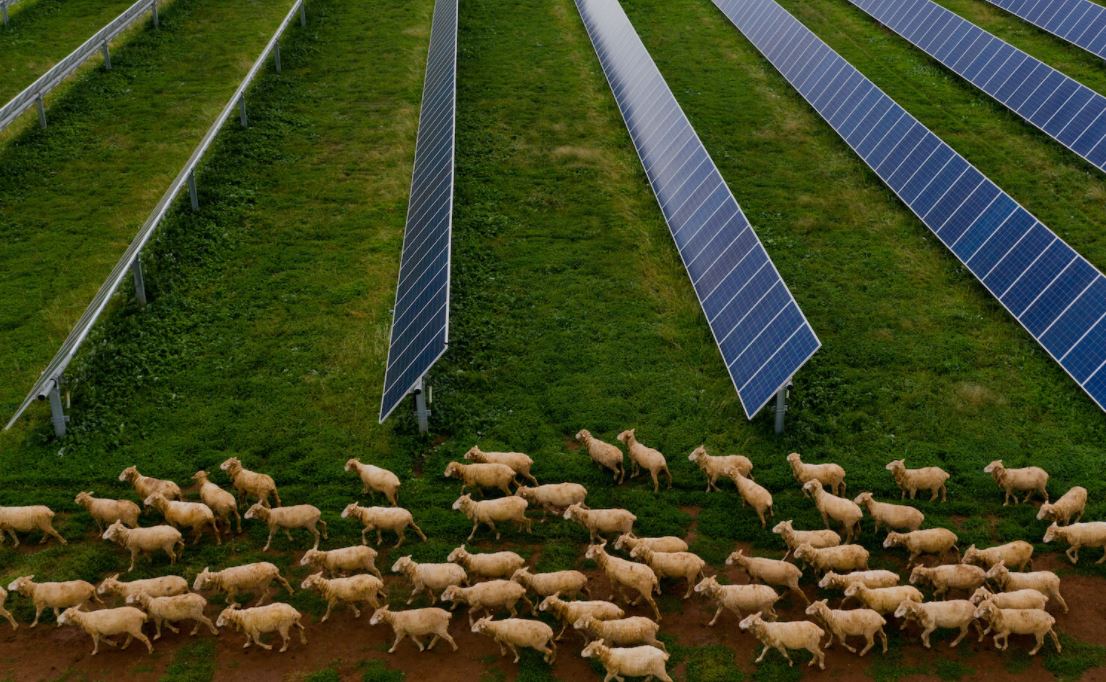Famous for its involvement in the Apollo 11 Moon landing, Parkes, a town in New South Wales’ central west, has again found itself at a technology zenith. Well, if you can consider grazing sheep below solar farms cutting edge and not simply sensible.
Wool broker Graeme Ostini, who is involved in the Parkes Solar Farm agrisolar (also known as agrivoltaics) trial, told the ABC he has seen benefits, including improved wool quality and quantity. “The wool cuts are in the top 5% in the district,” he told the outlet.
In the four years since the project began, the solar panels have provided shade to the sheep and the water which condensed on the panels, even during the drought, has been dripping onto the paddock and keeping the pasture green.
In turn, the sheep manage the grass and weeds below the panels, doing maintenance that projects would typically need to hire someone for.
Ostini said all in all, his income has increased through the colocation of sheep and solar.
Dubbo farmer and grazier Tom Warren has seen similar results, telling the ABC his 250-strong merino herd has had better wool. He believes the results occurred because of their improved conditions.
“It’s relatively clean, without burrs, without dust. There’s very, very little contamination of the wool and they’re protected from the sun as well,” Warren said.
Councillor Ken Keith, Mayor of Parkes and Show Society member, told the Clean Energy Council, which compiled a guide to agrisolar last year, that such projects are proving a win-win.
“It’s a win-win for the community and the solar farm. It helps the Show Society stay afloat while reducing the maintenance costs for the solar farm,” Keith said.
Agrisolar in the form of solar with sheep grazing is already popular in Australia, but other forms of agrisolar are emerging internationally. There are projects looking to support horticulture, viticulture, aquaculture and even cropping activities happening now.
“Recent international studies have shown that some crops can be grown at the same or even an improved rate under solar PV,” the Clean Energy Council said. “The studies suggest this is due to the panels protecting the crops from sun damage and extreme weather events, increasing soil moisture and reducing soil temperature on hot days.”
Despite the promising results, regional NSW has experienced a backlash against solar projects on agricultural land. In March, Independent Wagga Wagga MP Joe McGirr backed the formation of the Riverina Sustainable Food Alliance which is seeking to “safeguard valuable farmland and food security against the expansion of solar factories in the region.”
Likewise, last year the NSW branch of the Country Women’s Association voted to prevent solar farms from being developed in prime agricultural areas.
This content is protected by copyright and may not be reused. If you want to cooperate with us and would like to reuse some of our content, please contact: editors@pv-magazine.com.









3 comments
By submitting this form you agree to pv magazine using your data for the purposes of publishing your comment.
Your personal data will only be disclosed or otherwise transmitted to third parties for the purposes of spam filtering or if this is necessary for technical maintenance of the website. Any other transfer to third parties will not take place unless this is justified on the basis of applicable data protection regulations or if pv magazine is legally obliged to do so.
You may revoke this consent at any time with effect for the future, in which case your personal data will be deleted immediately. Otherwise, your data will be deleted if pv magazine has processed your request or the purpose of data storage is fulfilled.
Further information on data privacy can be found in our Data Protection Policy.